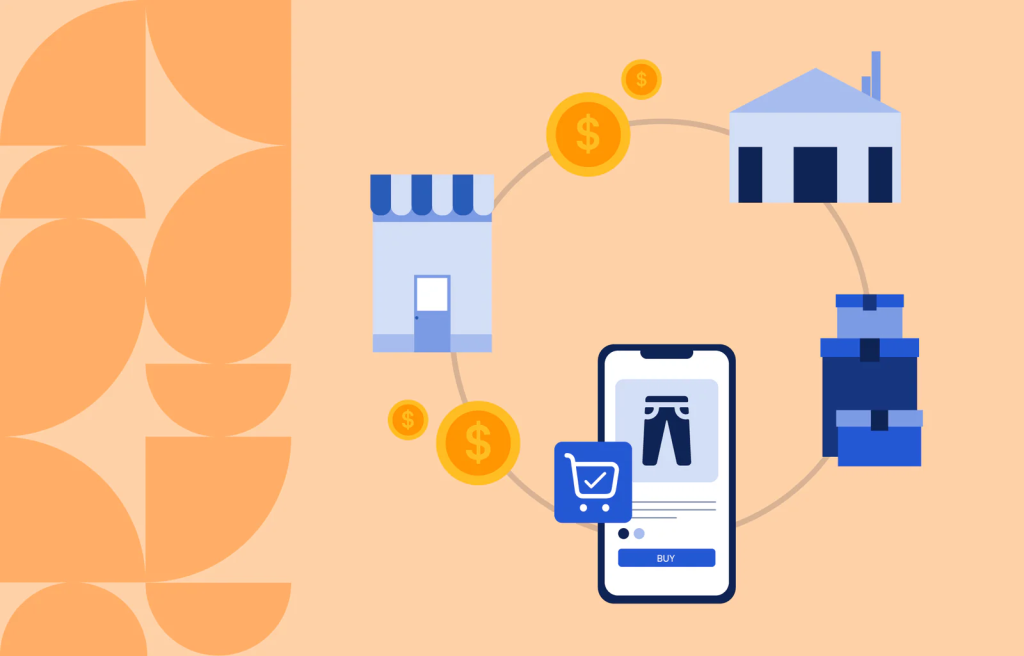Dropshipping has emerged as a popular business model in the e-commerce world. It offers a unique way to run an online store without the need to handle inventory directly. However, like any business approach, it comes with both advantages and disadvantages. Let’s take a closer look at what these are.

I. Advantages of Dropshipping
1. Low Initial Investment
- No Inventory Costs: One of the biggest perks is that you don’t have to purchase inventory upfront. This means you can start your business with minimal capital as you only pay for the products when a customer places an order.
- Reduced Storage Space: There’s no need to rent a warehouse or storage space to keep stock. You save on the costs associated with maintaining and securing inventory storage areas.
2. Wide Product Selection
- Variety of Suppliers: You can partner with multiple suppliers from different regions and industries. This allows you to offer a vast range of products in your online store, catering to diverse customer preferences.
- Quickly Adapt to Trends: Since you’re not tied to a specific inventory stockpile, it’s easier to add or remove products based on the latest market trends. You can quickly introduce trendy items and discontinue slow-moving ones.
3. Location Independence
- Run from Anywhere: As long as you have an internet connection, you can manage your dropshipping business from anywhere in the world. You don’t need to be physically present at a store or warehouse location.
- Global Customer Base: You can target customers globally without the limitations of shipping from a specific geographical location. Suppliers can ship products directly to customers worldwide.
4. Reduced Risk
- No Unsold Inventory: There’s less risk of being stuck with unsold inventory that can tie up your capital and take up storage space. If a product isn’t selling well, you simply stop promoting it without the worry of having excess stock on hand.
- Supplier Liability: In many cases, issues like product quality, returns, and refunds are handled by the suppliers. This reduces your liability and the complexity of dealing with such matters directly.

II. Disadvantages of Dropshipping
1. Lower Profit Margins
- Supplier Costs: Since you’re relying on suppliers to fulfill orders, they set the product prices, and you add your markup. However, competition might limit how much you can increase the price, resulting in relatively thin profit margins compared to businesses that source and sell their own products at a lower cost.
- Shipping and Handling Fees: You may have less control over shipping costs, and sometimes these fees can eat into your profits, especially if you offer free shipping to attract customers.
2. Lack of Control over Inventory
- Stock Availability: Suppliers might run out of stock without warning. This can lead to situations where you have to inform customers that their ordered item is unavailable, which can damage customer satisfaction and your reputation.
- Product Quality: You rely on suppliers to maintain quality standards. If they send out subpar products, it reflects poorly on your business, even though you didn’t handle the inventory directly.
3. Longer Shipping Times
- Multiple Parties Involved: Orders often have to go through the supplier, then to the shipping carrier, and finally to the customer. This can result in longer delivery times compared to businesses that ship directly from their own stocked inventory, potentially leading to unhappy customers.
- Shipping Delays: Delays from the supplier’s end or with shipping carriers are out of your control, and you’re left having to manage customer expectations and complaints.
4. Dependency on Suppliers
- Business Continuity: If a supplier goes out of business or has major issues like production halts, it can severely impact your business operations. You need to constantly monitor and build relationships with reliable suppliers to avoid disruptions.
- Limited Customization: You may have limited ability to customize products or packaging as these aspects are usually controlled by the suppliers, which can make it harder to create a unique brand identity.

Dropshipping offers several appealing advantages, such as low startup costs and flexibility, but it also comes with its fair share of drawbacks like thinner profit margins and less control over certain aspects. Understanding both sides is crucial for anyone considering starting or running a dropshipping business. By being aware of these pros and cons, you can make informed decisions to maximize the benefits and mitigate the challenges.





